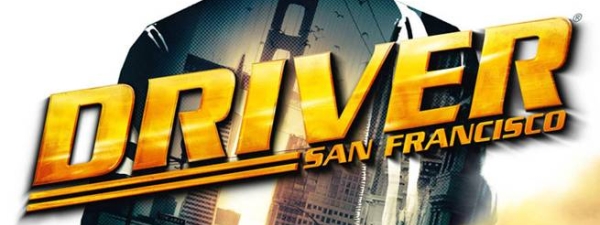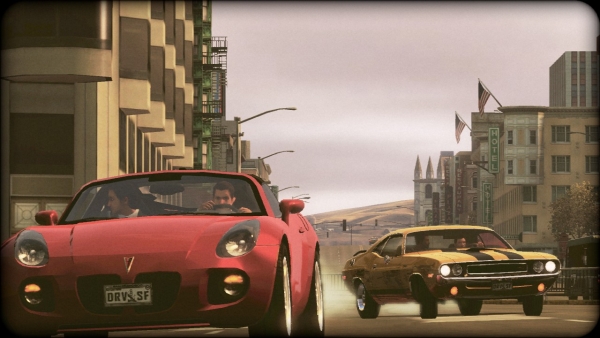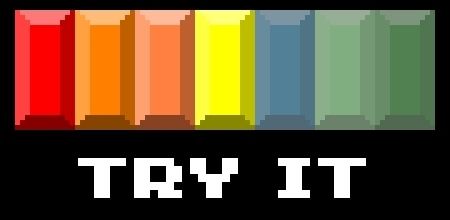
It would be very easy to dismiss Driver: San Francisco as yet another failed attempt to revive a franchise that really hasn’t meant much to gaming since the days of the original PlayStation. Some might even say that making a new Driver game is a complete waste of time and resources, considering how tarnished the brand is. However, doing so might actually be a disservice to anyone who’s a fan of unique, open world driving games. If anything, Driver: SF does something that very few games do in the year 2011… it actually wants to be a video game.
Platform: PC, PS3, Xbox 360 (Version Played)
Publisher: Ubisoft
Developer: Reflections
Genre: Body Switching Coma Simulation
Release Date: September 6, 2011
ESRB Rating: Teen
Driver: San Francisco is effectively a retelling of the core franchise tale – Tanner vs. Jericho. This time around, Tanner has captured his nemesis. However, during his transport to prison, a daring escape attempt is hatched, and in the midst of it all, Tanner is caught up in an explosion that puts him into a state of near death. During the attempts to revive him, though, he begins to hallucinate, and during this time, he can suddenly “shift” to another car and inhabit the body of a completely different person. Naturally, Tanner uses this time to recapture Jericho… in his hallucinations. Seriously. No doubt, this is one of the weirdest game plots in a long, long time.
In reality, the ridiculous “coma” plot device is, in all likelihood, a “creative” way to create an open world game without having Tanner actually get out of the car. It’s all very… video gamey. You can now proceed to shoot me in the head for using that terrible phrase. It’s definitely true though – Driver has always been better when on-foot portions are non-existent. Anyway, being able to “shift” into any car allows for the ability to drive pretty much anything you want, without drawing attention from The Law. After all, Tanner is one of the good guys… though you can still engage in police chases if you’re extra aggressive. The shifting can result in some very amusing situations, especially at random points where you might encounter, say, a guy talking like a pirate. If anything, the humor in the game is a legitimate positive.
Driver: SF functions very similarly to your average sandbox game. On the map there’s tons of tiny activities that range from car races to driving fast to send your heart rate into cardiac arrest mode to randomly crashing into stuff. Winning these gives Tanner “willpower” that can be spent on new vehicles, upgrades for said vehicles, and new garages around town that have a series of challenges tied to them. In addition, there’s more prominent missions that are actually required to progress. Which raises one of the more frustrating issues about the game: being forced to do these so-called “city missions” to unlock actual story missions. Some of these city missions can be fun (driving a truck rigged with a bomb that’ll blow if you drop to under 60 MPH… sound like Speed, anyone?), but they’re something of a drag when you just want to progress the plot.

One of the nicest things about Driver: SF is the car selection. Instead of using generic cars, the game is full of real vehicles. It adds a heaping helping of authenticity to the experience, even if it’s a game that’s taking place inside the mind of a dude in a coma. However, getting used to driving these cars is a whole different story. They’re downright challenging to handle. Due to the “chasey” design of the game, their physics are built around police chases, races, getaways, and the like… not for normal driving. It’s a design choice, but it makes for some tricky moments where the cars feel out of control. How much you can tolerate the loose, back-heavy physics is directly tied into how much you might enjoy the game.
Taking place in a real city like San Francisco means that there’s a slight lack of visual creativity, but Driver: SF still looks pretty solid. The cars are the star, thanks to their realistic modeling with some really great detail. They almost look like they came right out of Gran Turismo 5 or Forza Motorsport 4. The environments aren’t really great or anything, but they’re solid and, more importantly, the frame rate is solid. The game also features a really good soundtrack with some great licensed tunes, and some really good voice acting. It’s cheesy, it’s silly at times, but it’s still great voice acting all the same. It only adds to the absurd plot that simply doesn’t take itself that seriously. It’s always amusing when Tanner switches into a new body, and suddenly that person’s personality changes.
Driver: San Francisco is an interesting game. It has some frustrating issues that make it something that’s difficult to recommend, but at the same time many of the more “old fashioned” ideas make the game actually feel like a game and less like some awkward attempt at art or to make a “movie-like” experience. It’s a tricky balance, but Reflections pulled off an interesting game that restores the Driver name into something that’s worth checking out, if only to see what happens when a development team is allowed to use whatever crazy idea pops into their heads. It’s a fun game to spend time with… and isn’t that the important thing?

Review Disclosure: A review copy of Driver: San Francisco was provided by Ubisoft for the purposes of this review.






